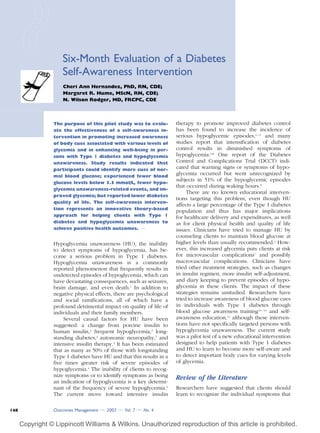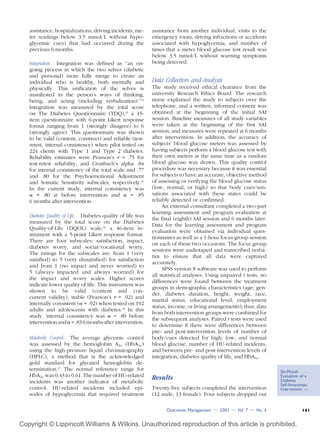This study evaluated a 6-month diabetes self-awareness intervention (SAI) for adults with type 1 diabetes and hypoglycemia unawareness. The SAI aimed to increase awareness of body cues associated with different blood glucose levels through education sessions. Results found that participants were able to identify more cues for normal blood glucose levels after the intervention. They also experienced fewer hypoglycemia episodes requiring treatment, emergency room visits, and driving incidents related to hypoglycemia. However, participants reported a lower quality of life related to diabetes. The self-awareness intervention showed promise as an approach to help this patient group achieve better health outcomes through increased awareness of their body's responses to varying glucose levels.








